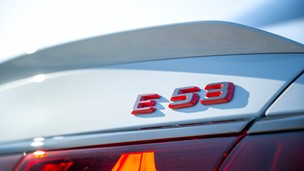Whatever urgency it may display in other matters, Fiat never seems to be in a rush to create a new Panda. The one that has just gone on sale to UK customers is the third in the series, and it has taken more than three decades to get this far.The latest model has some structural connection to the second Panda but none whatever to the first, but as if to compensate for this Fiat has allowed itself to be influenced by that original model's square speedometer, and gone so far as to extend the four-cornered theme - known within the company as "squircles" - to include several other interior styling elements. Even the steering wheel looks square, though that's just a piece of eye-fooling design trickery.You might consider this sort of thing trivial, and of course it is. On the other hand, Fiat has shown with the 500 that it "does cute" like no other manufacturer of the present day, and the lesser but still significant (and I think successful) application of that method to the Panda makes it quite an appealing car, and helps to compensate for the fact that - as Tom Stewart pointed out in his launch review - this model has less adventurous styling than its predecessor did.It looks quite large, not just in photos but even when you're standing looking at it, but that's just because of its height. Its footprint is more that of a city car, and although it will seat two large adults in the front (I know because I was one of them) there isn't enough space for such beings in the back seat, and luggage space of 225 litres is less than what's offered by the forthcoming Skoda Citigo/SEAT Mii/Volkswagen Up! trio.That situation will change in September, when Fiat will start to offer a sliding rear seat as an option, and in doing so increase the potential capacity to 260 litres, moving ahead of the Czech/Spanish/German opposition. But its 870 litres with the rear seat folded will still be around 80 litres short, not helped by the fact that even in that position the resulting flat surface is a long way above floor level.The Panda's appeal is at its greatest when there's an 875cc two-cylinder TwinAir turbo petrol engine under the bonnet, and that's why I've chosen one of those models for our first test. Fiat is expecting the simpler 1.2-litre four-cylinder petrol unit to be more popular (while being resigned to the idea that hardly anyone will go for the 1.3 diesel) but the fact is that I love the TwinAir. One day I'm going to buy one - just the engine itself - and put it in my garden and switch it on every time I need cheering up. That's how delightful the TwinAir is.But it's also a very serious piece of machinery, being at the time of writing the current International Engine of the Year title holder. As tested, it produces a maximum of 85bhp and is therefore the most powerful in the range, at least for the moment, but it also gives the Panda CO2 emissions of less than 99g/km and therefore makes it exempt from Vehicle Excise Duty and the London congestion charge. (There's also a 65bhp version, but oddly enough that's less economical, emits more CO2 and does not have the same tax advantages.)The financial case for the TwinAir isn't as strong as it first appears, however. The 1.2 costs only £20 per year to tax and is £1200 cheaper to buy, so unless you're a regular visitor to the London congestion charge zone it's the more sensible option. That said, I'd still have the TwinAir.Having driven both, I'd say that there isn't much to choose between them as far as the driving experience is concerned. They ride quite well, though the soft suspension means there's a fair bit of body movement, and you can hustle along through corners far more sportily than I imagine most owners actually will.In town, the Panda is very easy to drive, thanks mostly to its light steering and reasonable (at least by the motor industry's current miserable standards) all-round visibility. On the debit side, the steering wheel isn't adjustable for reach, the turning circle is slightly greater than I expected it to be, and for some reason I found it difficult to judge the clutch action well enough to be able to make reliably smooth gearchanges.Fiat isn't combining the 85bhp TwinAir engine with the entry-level Pop specification, so this mini-range starts with the Easy tested here. For an extra £500 you can have the Lounge, which has 15" alloy wheels (all other versions having 14" steels as standard), front foglights and electrically-adjustable heated door mirrors.A great deal of the equipment you could possibly have with your Panda is available only as extra-cost options, most disappointingly ESP (which isn't going to impress Euro NCAP), side airbags and a space-saver tyre rather than one of those puncture repair nonsenses which I will ban the second I assume presidency of the world.On both the Easy and the Lounge, you also have to pay extra for a height-adjustable driver's seat, a split-folding rear seat, rear parking sensors and a heated windscreen, most of which you might have expected to get as standard on at least one model in the range.Further options, perhaps more understandable ones, are the Dualogic automatic gearbox - which is available only with the 85bhp TwinAir engine and actually improves its CO2 rating - and the Blue&Me "infotainment" system with TomTom Live satellite navigation. Engine 875cc, 2 cylinders Power 85bhp Transmission 7 speed semi-auto Fuel/CO2 67.3mpg / 99g/km Acceleration 0-62mph: 11.2 seconds Top speed 110mph Price £10,750 Details correct at publication date

Our Rating



